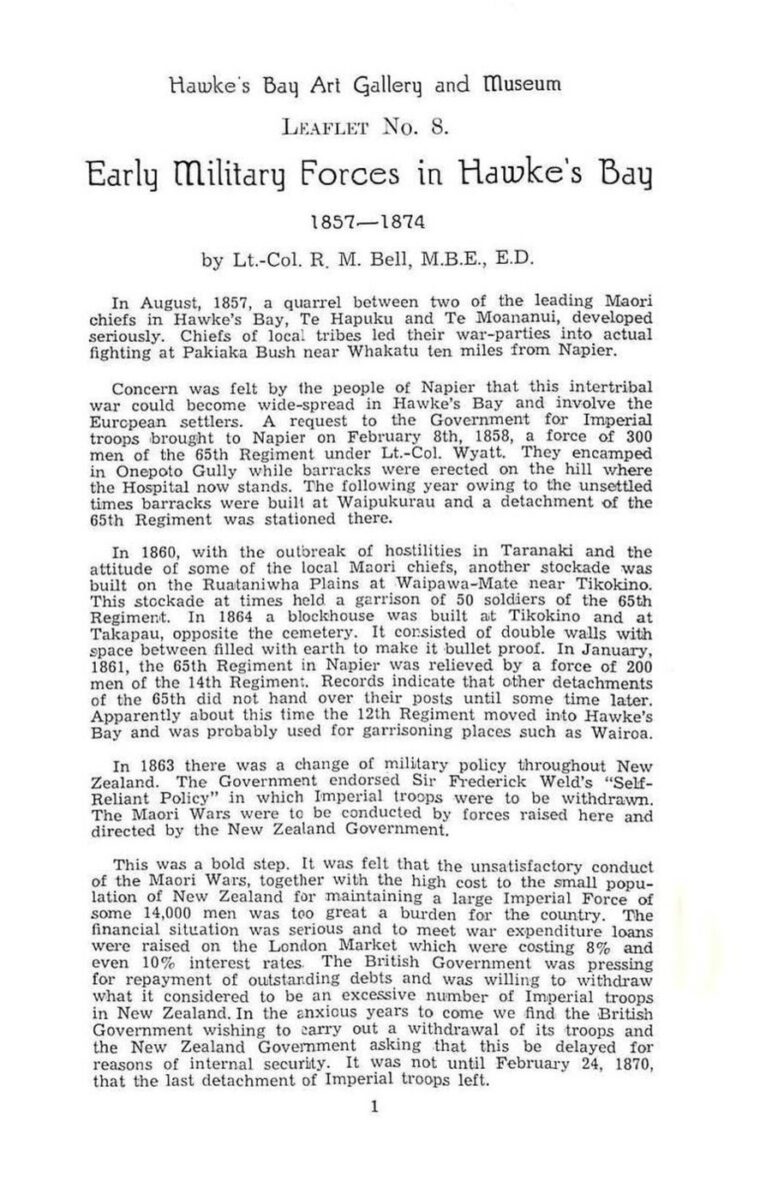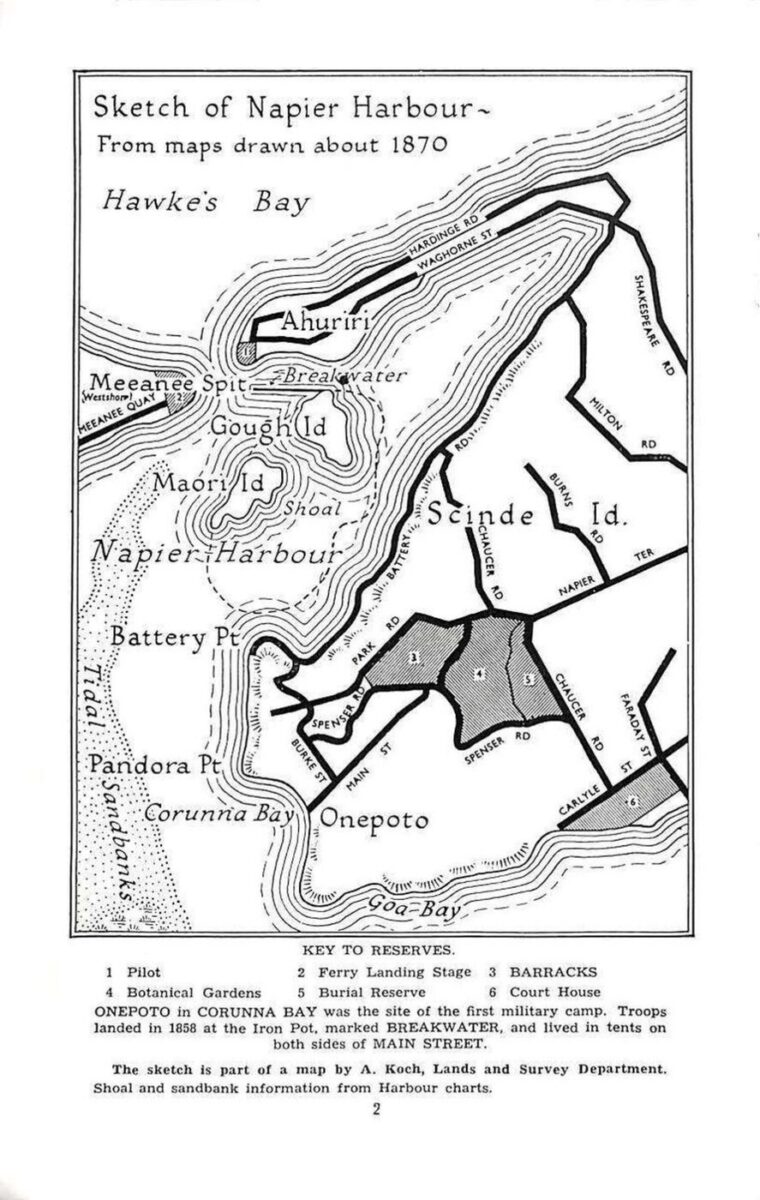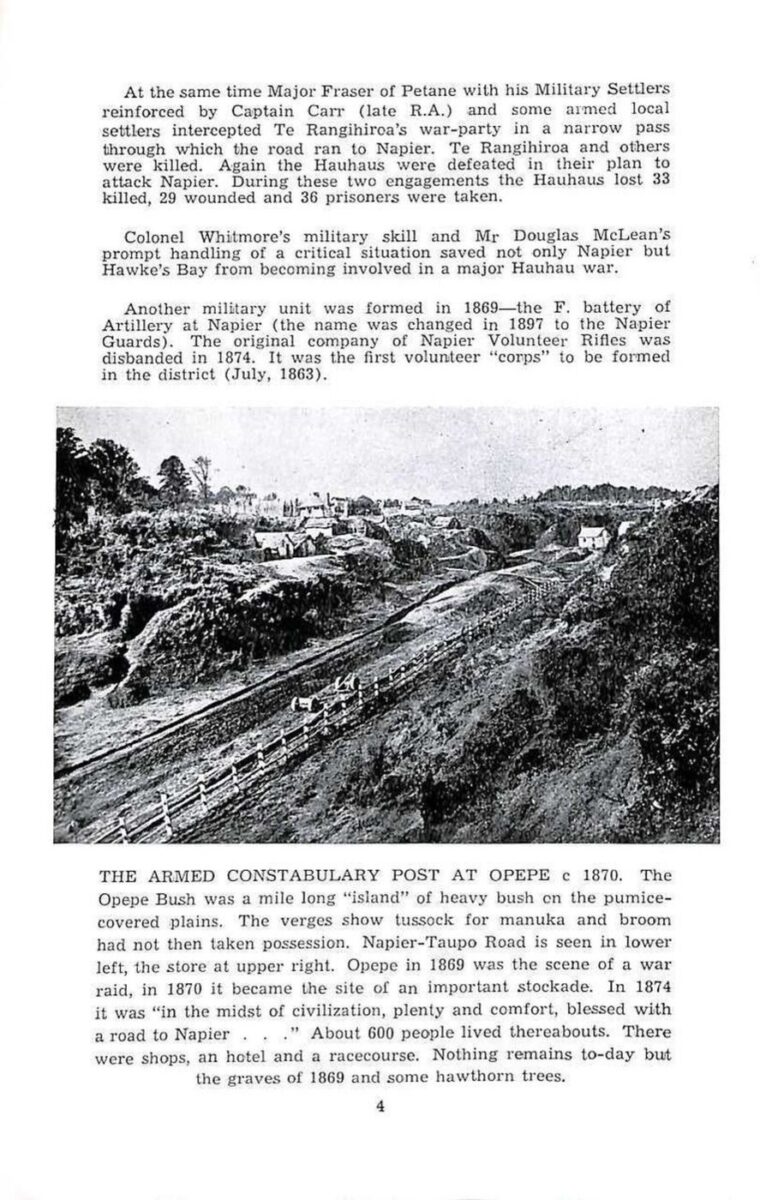Page 3
In May, 1863, under the new policy, Major Whitmore at Napier was authorised to call out the militia for training with a view for active service. In the same year Captain J, Buchanan initiated the Napier Volunteer Rifles, an entirely voluntary organisation. Other units, the Puketapu and Meeanee Militia and the Clive Mounted Company were formed as the situation became more serious. A strong party of some 200 Hauhaus arrived in Hawke‘s Bay in 1865 and went to Takapau. A further 300 arrived soon after and converts to Hauhauism were made among Hawke’s Bay Maoris. The situation was last deteriorating.
In November, 1865, hostilities broke out in Poverty Bay. “H. M Brisk” landed a force there of Hawke’s Bay Cavalry (Colonial Defence Force) under Capt. La Serre and some Military Settlers under Major Fraser who that month captured the Hauhau stronghold at Waerenga-a-Hika. This for the time being settled the Hauhau in Poverty Bay.
The attitude of the Wairoa Maoris now caused concern but Major Fraser with his company of Military Settlers restored the situation. His attacking force consisted of 100 men of the Hawke‘s Bay and Taranaki Military Settlers and about the same number of local loyal Maoris under their chief: Ihaka Whanga and Kopuparapara. With quick decisive action the Hauhaus were driven back towards Waikaremoana. The danger to Hawke‘s Bay now seemed averted and the militia and voluntary organisations returned to their homes.
In September, 1866, it was with considerable surprise and consternation to people in Hawke’s Bay that 100 Hauhaus from Taupo area together with a party from the war-loving Ngati Hineuru from Te Haroto and Tarawera, led by the fiery chief Te Rangiheroa and a Pai-marire priest, Panapa, suddenly appeared near Petane (Bay View). The main party later went to Omaranui [Omarunui] and encamped at the Maori pa.
The defence force had been disbanded. Although in August 300 men of the 70th Regiment had taken over from the 14th Regiment, the use of regular troops was forbidden (under Self-Reliant Policy). The commander Major Saltmarsh offered assistance and major Millar of the 12th Regiment offered to march 30 of his 55 men to Napier but both offers were declined. Colonel Whitmore called out the Militia (about 130 men), a company of 45 Napier Rifle Volunteers under Captain Buchanan, and 25 of the Clive Mounted Company under Captain Rhodes. Word was sent to Major Fraser at Wairoa and 40 of his Military Settlers hastened to Napier bringing with them loyal Maoris under their Chiefs Ihaka and Kopu.
At midnight October 11, 1866, there marched out of Napier a force of 200 local militia and volunteers, a number of friendly Maoris under their chiefs Renata, Tareha and Karauria reinforced by the Wairoa Maori contingent. The next morning they attacked the Hauhaus at Omaranui. After a sharp engagement the enemy was defeated.



















Do you know something about this record?
Please note we cannot verify the accuracy of any information posted by the community.